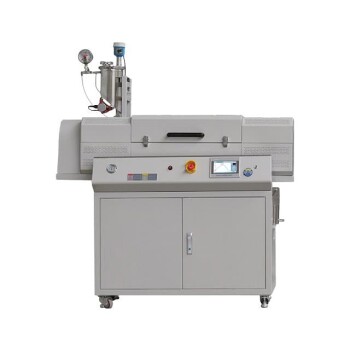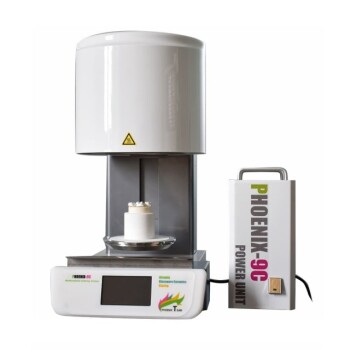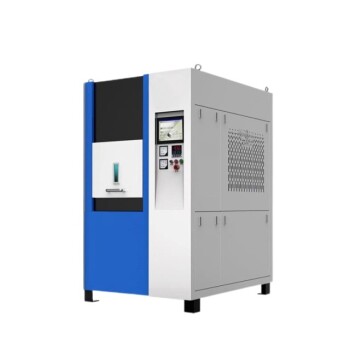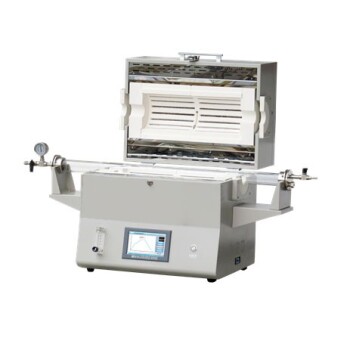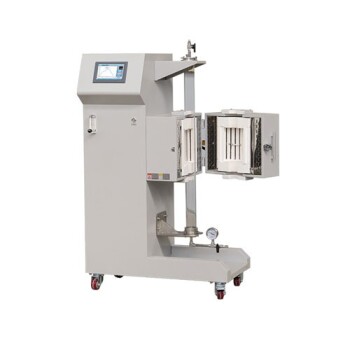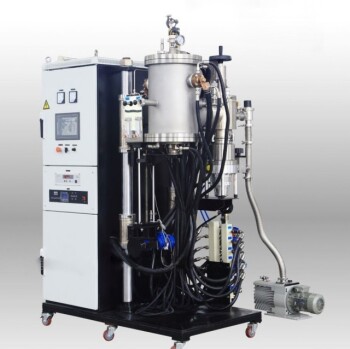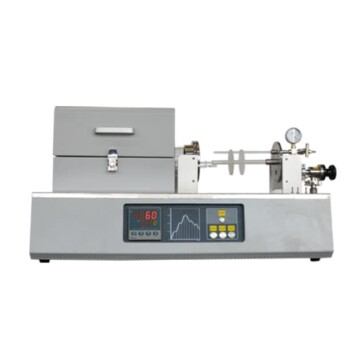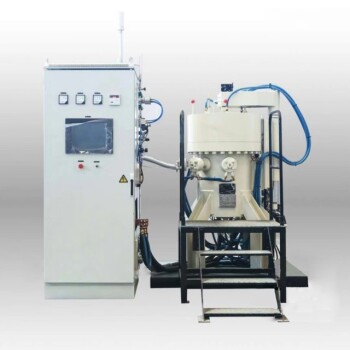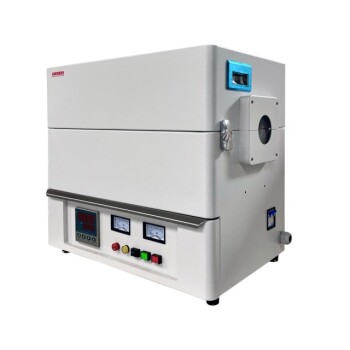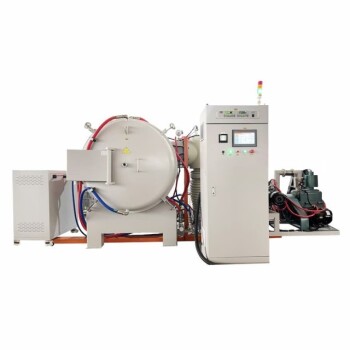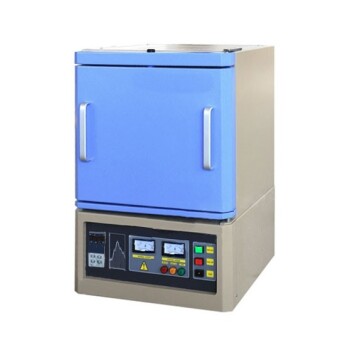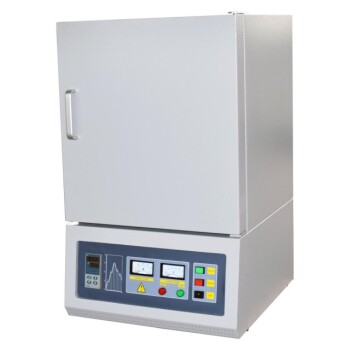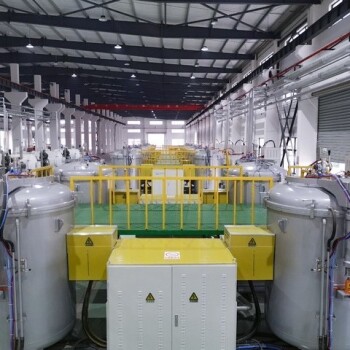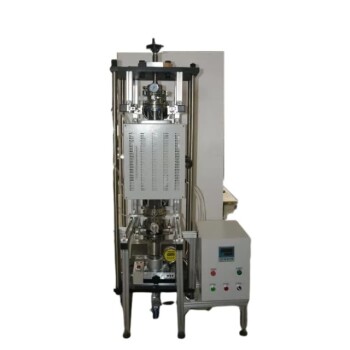At a fundamental level, the difference between a calcination and a sintering furnace lies entirely in their intended purpose. A calcination furnace is designed to heat materials to induce a chemical change, such as removing impurities or volatile components like water and carbon dioxide. In contrast, a sintering furnace heats compacted powders below their melting point to fuse the particles together, creating a solid, dense object.
While both furnaces use high temperatures, their goals are fundamentally different. Calcination is a process of thermal decomposition or purification, while sintering is a process of consolidation and densification.
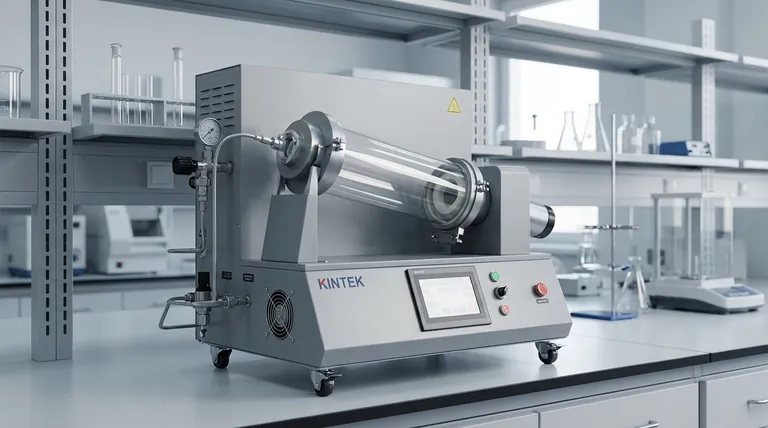
The Core Purpose: Chemical Change vs. Physical Bonding
The function of any furnace is dictated by the process it needs to perform. For calcination and sintering, these processes have opposite objectives.
Calcination: Driving Chemical Reactions
Calcination uses heat to break chemical bonds and drive thermal decomposition. The primary goal is to change the chemical composition of a material.
Common applications include removing water from hydrates, driving off CO₂ from carbonates (like in cement production), or oxidizing impurities from metal ores. The resulting material is a purified or chemically altered precursor, not a finished part.
Sintering: Fusing Particles Together
Sintering uses heat to create a solid mass from a powdered material without melting it. The energy drives atoms to diffuse across the boundaries of the particles, "welding" them together.
The primary goals are to increase the material's strength, density, and integrity. This process transforms a fragile "green part" made of compressed powder into a robust, near-net shape component.
Furnace Design and Operational Differences
The distinct goals of calcination and sintering directly influence furnace design and how they are operated, particularly regarding atmosphere control.
Atmosphere Control is the Critical Distinction
This is often the most significant design difference. Calcination frequently occurs in the presence of air or oxygen to facilitate oxidation and removal of impurities like excess carbon.
Sintering, on the other hand, usually requires a tightly controlled atmosphere. Using inert gases (like argon or nitrogen) or reducing gases (like hydrogen) prevents oxidation, which would inhibit the particles from bonding effectively and harm the final material properties.
Temperature Profiles and Cycles
Sintering cycles can be complex, involving precise temperature ramps, extended holds to allow for diffusion and densification, and controlled cooling rates to manage the final microstructure.
Calcination profiles are often simpler, focused on reaching and holding a specific temperature for long enough to ensure the desired chemical reaction is complete.
Understanding the Process Outcomes
The end product of each process is radically different, which clarifies their distinct roles in manufacturing and materials science.
The Outcome of Calcination: A Purified Precursor
The output of a calcination furnace is typically a powder or ore that has been chemically altered. It is not a finished component.
For example, calcining bauxite yields alumina, which is the precursor material later used to produce aluminum metal.
The Outcome of Sintering: A Dense, Near-Net Shape Part
The output of a sintering furnace is a solid, coherent object with specific mechanical properties. The goal is to produce a functional part that is close to its final desired shape and dimensions.
Examples include ceramic bearings, tungsten carbide cutting tools, and various components made via powder metallurgy.
Making the Right Choice for Your Goal
Selecting the correct furnace is a direct function of your material processing objective. Use these guidelines to determine your need.
- If your primary focus is purification or decomposition: You need a calcination process to thermally remove volatile compounds, water, or impurities from a raw material.
- If your primary focus is creating a solid part from powder: You need a sintering process to fuse particles together, increase density, and achieve the desired mechanical strength.
- If your primary focus is preventing oxidation during consolidation: You specifically require a sintering furnace with precise atmospheric controls to protect the material's integrity during heating.
Ultimately, understanding whether you are changing a material's chemistry or altering its physical structure is the key to selecting the right thermal process.
Summary Table:
| Feature | Calcination Furnace | Sintering Furnace |
|---|---|---|
| Primary Goal | Chemical decomposition & purification | Physical bonding & densification |
| Typical Atmosphere | Air/Oxygen | Controlled (Inert/Reducing) |
| Process Outcome | Purified powder/precursor | Solid, dense part |
| Common Applications | Cement production, ore processing | Powder metallurgy, ceramics |
Unsure which furnace process is right for your materials? The experts at KINTEK can help! We specialize in providing laboratory equipment and consumables, including furnaces tailored for both calcination and sintering applications. Our team will work with you to understand your specific goals—whether it's chemical purification or creating strong, dense parts from powder—and recommend the ideal solution for your lab's needs.
Contact us today via our Contact Form to discuss your thermal processing requirements and discover how KINTEK can enhance your research and production efficiency.
Visual Guide

Related Products
- Laboratory Vacuum Tilt Rotary Tube Furnace Rotating Tube Furnace
- Vacuum Heat Treat and Molybdenum Wire Sintering Furnace for Vacuum Sintering
- 600T Vacuum Induction Hot Press Furnace for Heat Treat and Sintering
- Dental Porcelain Zirconia Sintering Ceramic Furnace Chairside with Transformer
- Spark Plasma Sintering Furnace SPS Furnace
People Also Ask
- What is the temperature range for calcination? Master the 800°C to 1300°C Process
- What are the advantages of a rotary furnace? Achieve Superior Homogeneity & Efficiency for Powders & Granules
- What is the process of zirconium production? From Ore to High-Performance Metal & Ceramic
- What is a rotary heat type furnace? The Ultimate Guide to Uniform Heating & Mixing
- What is the future of pyrolysis oil? A Key to Circular Economy & Renewable Fuels
